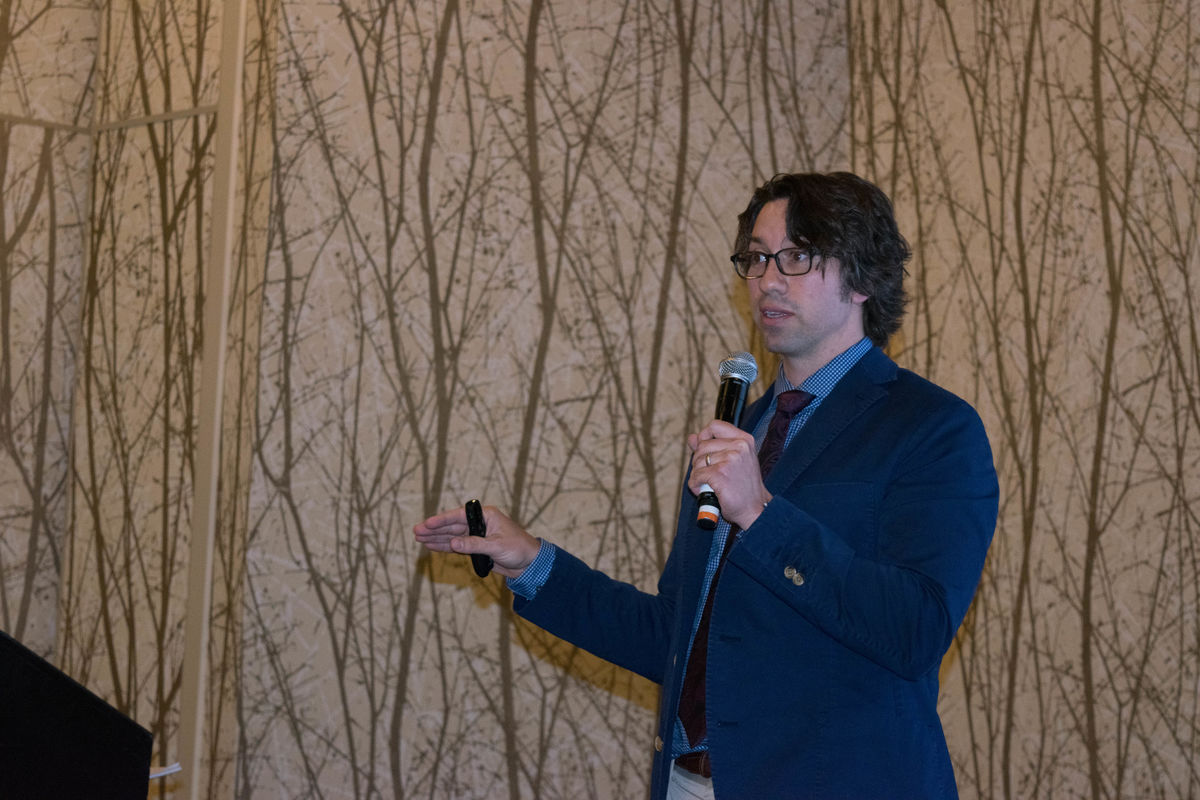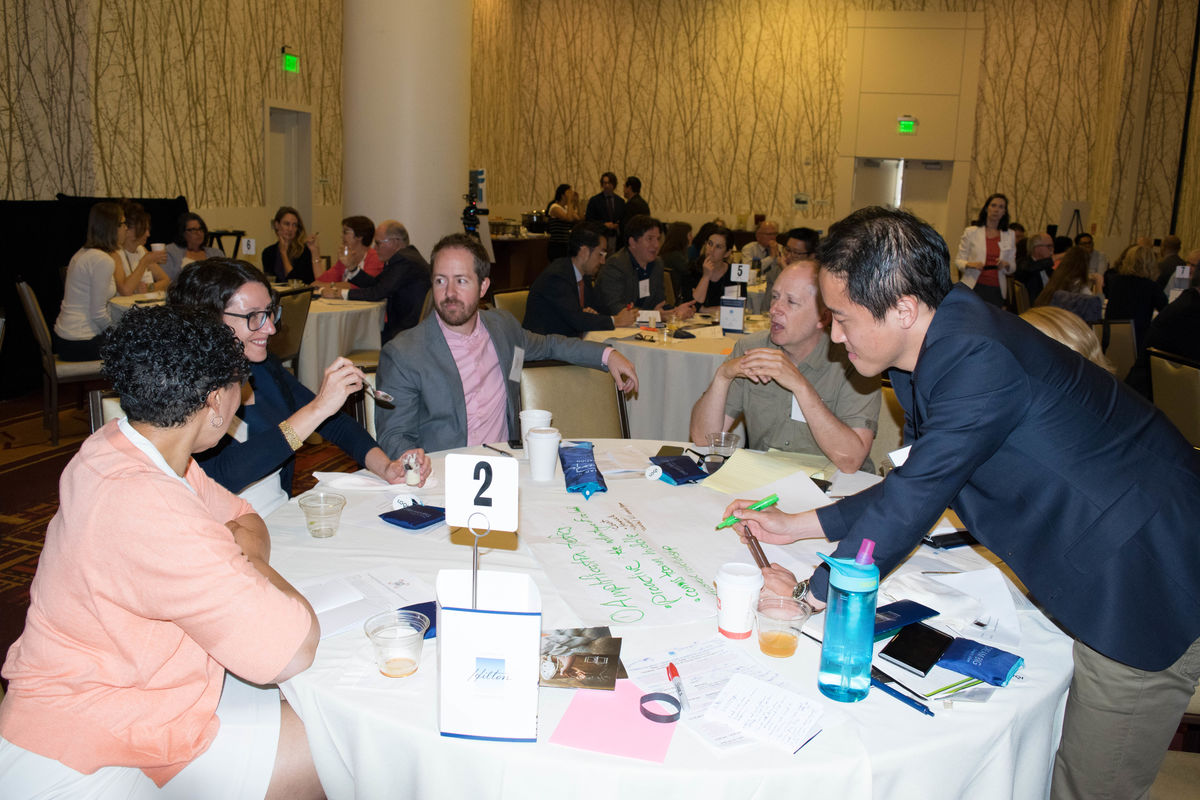Over the last several years, the community working to end chronic homelessness in Los Angeles County has been celebrated for and fueled by its unprecedented collaboration.
Many of the catalytic outcomes of this strong collaboration can be found in the October 2016 report by our evaluation partner, Abt Associates, “Chronic Homelessness Initiative: 2016 Evaluation Report, Phase I.” The report describes key goals and progress made from 2011-2015, highlighting the alignment of funding through the Home For Good Funders Collaborative, the establishment of the Coordinated Entry System that connects those experiencing homelessness to the optimal resource for their needs and demonstrated action by elected and public officials. According to the report, “There is no question that the landscape shifted between 2011 and 2015 and that the community reached a new standard for collaboration…” and that as of January 2016, “Strong systems were in place, and public agencies had embraced new responsibilities.”
The report and recommendation came just before a major demonstration of public support for ending homelessness. Voters passed Proposition HHH in November 2016, a $1.2 billion bond measure by the city of Los Angeles to provide supplemental funding for new permanent supportive housing, and Measure H, in March 2017 which will generate about $355 million annually for homeless programs over the next 10 years.
The strong collaborative effort between the public, private, and service sectors working together for years to end homelessness was essential in setting up the conditions for Measure H and Proposition HHH to pass. Still, there is more work to be done. While the residents of both the city and county of Los Angeles have demonstrated through voting power that they are ready to fund efforts to end homelessness, if Los Angeles is going to achieve this goal, engaging the public must not end at the ballot box.
Our collaborative will need to share past experiences of alignment, coordination and shared strategies to find common goals and a common voice. Recent events have shown that our collaborative must reinforce one another in addressing the concerns of the general public regarding housing placement, and persuade Angelenos that including housing for our homeless neighbors in all of our backyards is not just the right thing to do morally, but also for the benefits it brings to all of our neighborhoods. There is still the need to identify the messaging and framing that will most clearly communicate these benefits and ameliorate the preconceptions and preconceived concerns from Angelenos.
To further these discussions, we hosted a convening on June 8, on Framing for Impact: Ending Homelessness in Los Angeles County. Seventy five key partners in the philanthropic, nonprofit and public sector gathered to hear from Nat Kendall-Taylor of Frameworks Institute, which works to improve public understanding of specific social issues. Through Kendall-Taylor’s thought-provoking and out-of-the-box presentation, the Foundation created a space where change agents in Los Angeles could reflect, engage and debate to help formulate next steps on communicating and engaging the public to discuss the challenges and opportunities as we work to most effectively end homelessness in the County.

With thousands of our Los Angeles neighbors still living without a home, we remain committed as a partner to Home for Good, a community plan to end chronic homelessness. Our team feels energized by this partner discussion which reaffirms the need to engage the public as part of the solution to welcome formerly homeless individuals as neighbors into their communities. As our colleague, Andrea Iloulian, reminded the group as they left that day, “…while we don’t always agree because of our different thoughts and experiences, we do so much better, together.”

Research
Why Housing Messages Are Backfiring and 10 Things We Can Do About It
Housing is the starting point for life trajectories—often determining who has access to good jobs, good food, safe parks and effective schools. But this perspective is difficult for the public to appreciate. To advance a progressive housing agenda, advocates must first understand why current messages are failing and backfiring. FrameWorks teamed up with Enterprise Community Partners to think about how advocates’ messages affect public thinking.
Read the research here.
Mixing It Up: Reframing Neighborhood Socioeconomic Diversity
This comprehensive MessageMemo synthesizes FrameWorks research about socioeconomic mixing and makes recommendations that advocates and experts can use in their communications practices to create more integrated and inclusive communities.
Access the multimedia report here and the pdf report here.
Resources
How Words Change Minds: The Science of Storytelling
Nat Kendall-Taylor breaks down how people make decisions, and how understanding culture and behavioral science can be used to communicate complex issues and shape policy.
Watch his TED Talk here.
Building Understanding of Environmental Health: A Communications Toolkit
This toolkit is designed to help advocates in the environmental health sector increase public understanding of the relationship between environmental conditions and public health; the challenges our nation faces in addressing environmental health risks; the importance of research and regulatory efforts in protecting Americans’ environmental health; and the nature of work performed by environmental health professionals to maintain and improve our communities’ natural and built environments.
Coverage
The Right Message about the Link Between Poverty and Housing Is Vital
This commentary in The Guardian, by FrameWorks CEO Nat Kendall-Taylor, describes how FrameWorks research on poverty in the United Kingdom intersects with housing issues.
A Blueprint for Better Housing Messages
This piece, published by the Sightline Institute, summarizes FrameWorks’ housing research, outlines FrameWorks’ recomenndations and provides a downloadable flashcard that advocates can use when drafting communications materials.